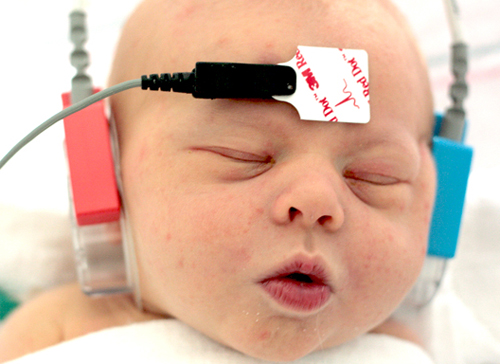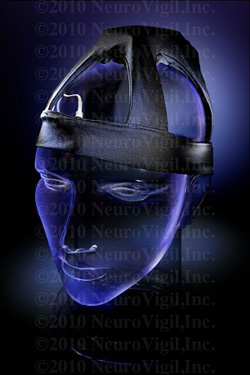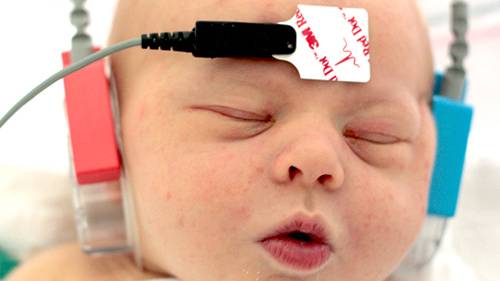Mystery Man Gives Mind-Reading Tech More Cash Than Facebook, Google Combined
Source: fastcompany.com
The company specializes in non-invasive, wireless brain-recording tech. And its first round of funding is bigger than Google’s and Facebook’s first-round investments combined. Here’s why.
Imagine the money that could be made by a drug company that accurately predicted and treated the onset of Alzheimers before any symptoms surfaced. That may give us an idea why NeuroVigil, a company specializing in non-invasive, wireless brain-recording tech, just got a cash injection that puts it at a valuation "twice the combined seed valuations of Googles and Facebooks first rounds," according to a company announcement.
Facebooks Series A funding in May 2005 was at $12.7 million, valuing the firm at $98 million. Some figure put the series Series A funding of Google, on a $25 million co-investment from Sequoia and Kleiner Perkins, at $75 million in late 1999. Add those valuations. Double em, and it would seem NeuroVigil got tens of millions in early cash, enough for a valuation of roughly $250 million.
Most of it came from one moneybags, an "anonymous American industrialist and technology visionary," NeuroVigil says. There were other participants dotted across the U.S. Bill Gates, whos loaded and philanthropic, and Steve Jobs, whos loaded and focused on health (his own, especially), may have an interest in investing in clever medical technology.
NeuroVigil describes itself as a neurotechnology company centered on a "fundamentally new way to assess brain activity, non-invasively, and rapidly, using a single channel of electroencephalogram."

NeuroVigils key product at the moment is the iBrain, a slim device in a flexible head-cap thats designed to be worn for continuous EEG monitoring of a patients brain function--mainly during sleep. Its non-invasive, and replaces older technology that could only access these kind of brain functions via critically implanted electrodes actually on the brain itself. The idea is, first, to record how brain function changes over time, perhaps as a particular combination of drugs is administered or to help diagnose particular brain pathologies--such as epilepsy.
 iBrain promises to open a huge pipeline of data with its powerful but simple brain-reading tech, which is gaining traction thanks to technological advances. But the other half of the potentailly lucrative equation is the ability to analyze the trove of data coming from iBrain. And thats where NeuroVigils SPEARS algorithm enters the picture. Not only is the company simplifying collection of brain data with a device that can be relatively comfortably worn during all sorts of tasks--sleeping, driving, watching advertising--but the combination of iBrain and SPEARS multiplies the efficiency of data analysis. Heres NeuroVigil on that:
iBrain promises to open a huge pipeline of data with its powerful but simple brain-reading tech, which is gaining traction thanks to technological advances. But the other half of the potentailly lucrative equation is the ability to analyze the trove of data coming from iBrain. And thats where NeuroVigils SPEARS algorithm enters the picture. Not only is the company simplifying collection of brain data with a device that can be relatively comfortably worn during all sorts of tasks--sleeping, driving, watching advertising--but the combination of iBrain and SPEARS multiplies the efficiency of data analysis. Heres NeuroVigil on that:Clinical EEG data acquisition and interpretation is currently cumbersome, time consuming, and error prone. NeuroVigils technologic advance dramatically improves the quality and lowers the costs of sleep testing. Our technology not only automates current manual tasks, but also more than quadruples the amount of useful information obtained from current EEG data, which leads to neural signatures, or correlates of important disease states, that are useful in early detection and diagnosis of important sleep-related medical conditions as well as diseases of the Central Nervous System, such as Alzheimers, Schizophrenia, Parkinsons, etc. The SPEARS algorithm has been proven, using human data, to perform better than current clinical methods at interpreting a nights worth of EEG data, and performs this task that requires 30-60 minutes for an experienced human scorer in seconds.
So what will all these tens of millions of dollars of cash let NeuroVigil do? Lots of R&D and product-refining design of course. Its possible NeuroSky will concentrate its efforts on honing the size and reliability of the iBrain to make it a standard tool in hospitals around the globe.
Its also possible it could develop its technology into non-medicinal uses such as human-computer interfaces--in an earlier announcement, NeuroVigil noted, "We plan to make these kinds of devices available to the transportation industry, biofeedback, and defense. Applications regarding pandemics and bioterrorism are being considered but cannot be shared in this format." And theres even a popular line of kids toys that use an essentially similar technique, powered by NeuroSky sensors--themselves destined for future uses as games console controllers or even input devices for computers.
Another trove of potential cash could come from neuromarketers, currently measuring brain activity around decision-making about everything from what soup to buy, to what movie to see, to which candidate to vote for.
Tens of millions buys a lot of novel-use testing.
Article from: fastcompany.com
Video from: YouTube.com
The Present & Future of Mind-Reading Technology by BadKitty






















